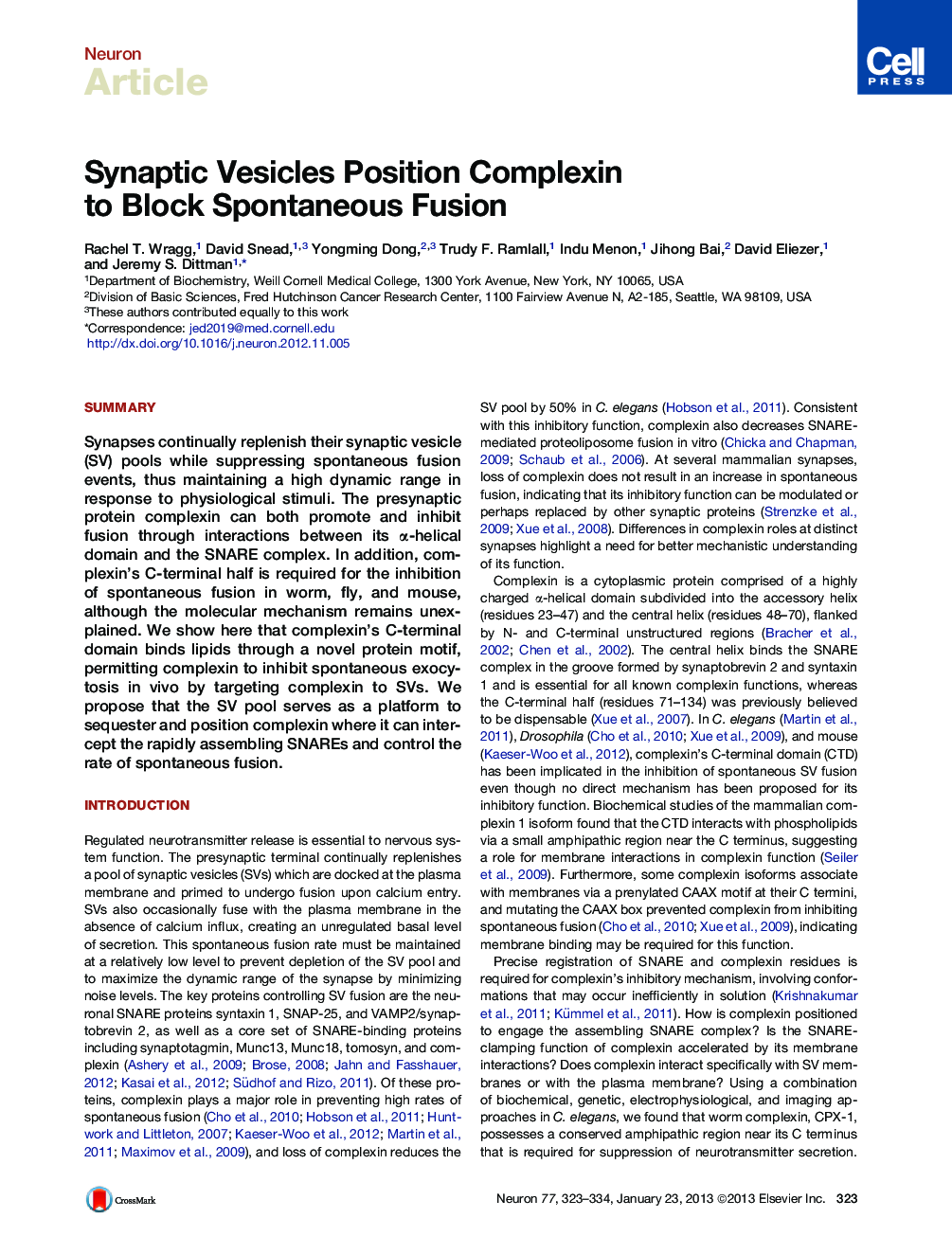| Article ID | Journal | Published Year | Pages | File Type |
|---|---|---|---|---|
| 4321181 | Neuron | 2013 | 12 Pages |
SummarySynapses continually replenish their synaptic vesicle (SV) pools while suppressing spontaneous fusion events, thus maintaining a high dynamic range in response to physiological stimuli. The presynaptic protein complexin can both promote and inhibit fusion through interactions between its α-helical domain and the SNARE complex. In addition, complexin’s C-terminal half is required for the inhibition of spontaneous fusion in worm, fly, and mouse, although the molecular mechanism remains unexplained. We show here that complexin’s C-terminal domain binds lipids through a novel protein motif, permitting complexin to inhibit spontaneous exocytosis in vivo by targeting complexin to SVs. We propose that the SV pool serves as a platform to sequester and position complexin where it can intercept the rapidly assembling SNAREs and control the rate of spontaneous fusion.
► Complexin’s C-terminal domain binds phospholipids through a conserved motif ► This domain is required for complexin’s ability to inhibit spontaneous exocytosis ► Synaptic vesicles (SVs) recruit complexin via its C-terminal domain ► The SV interaction coordinates complexin to intercept the assembling SNAREs
